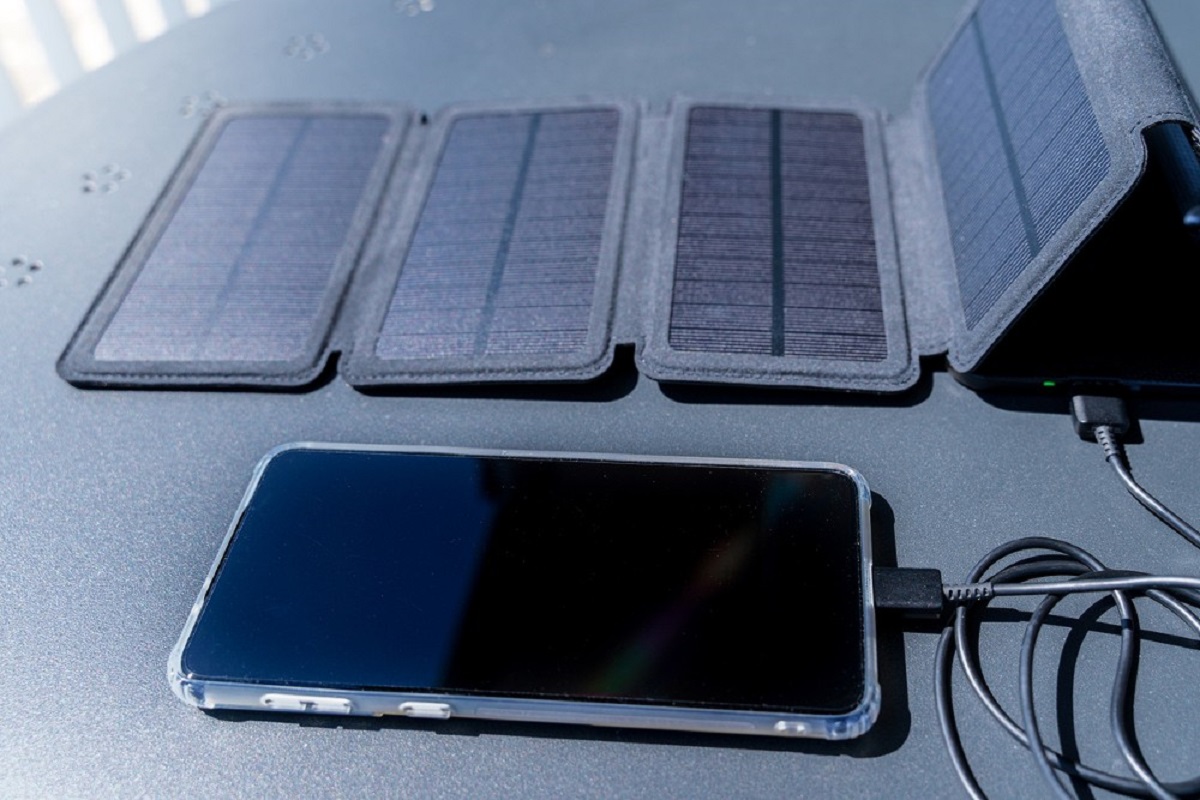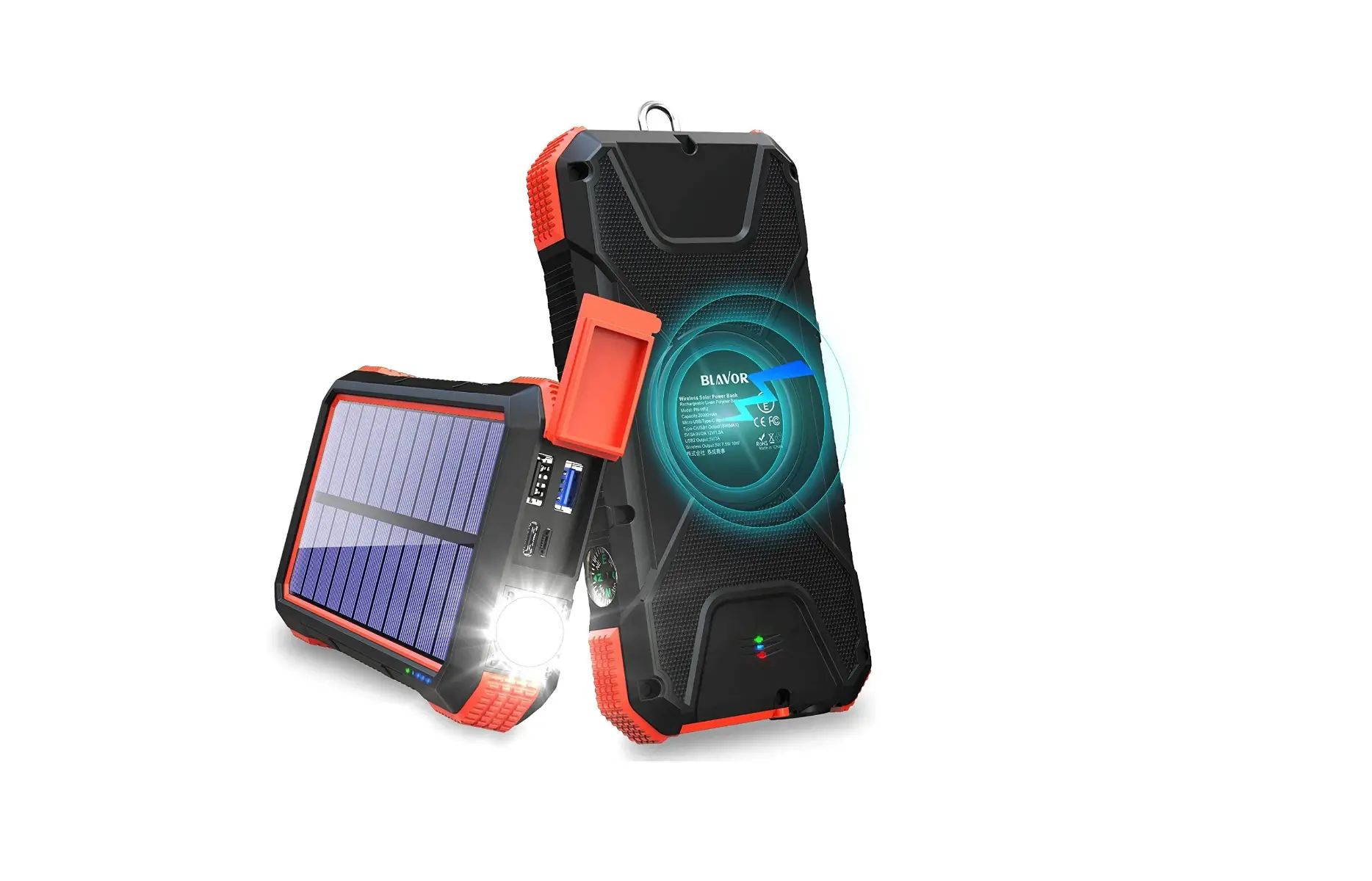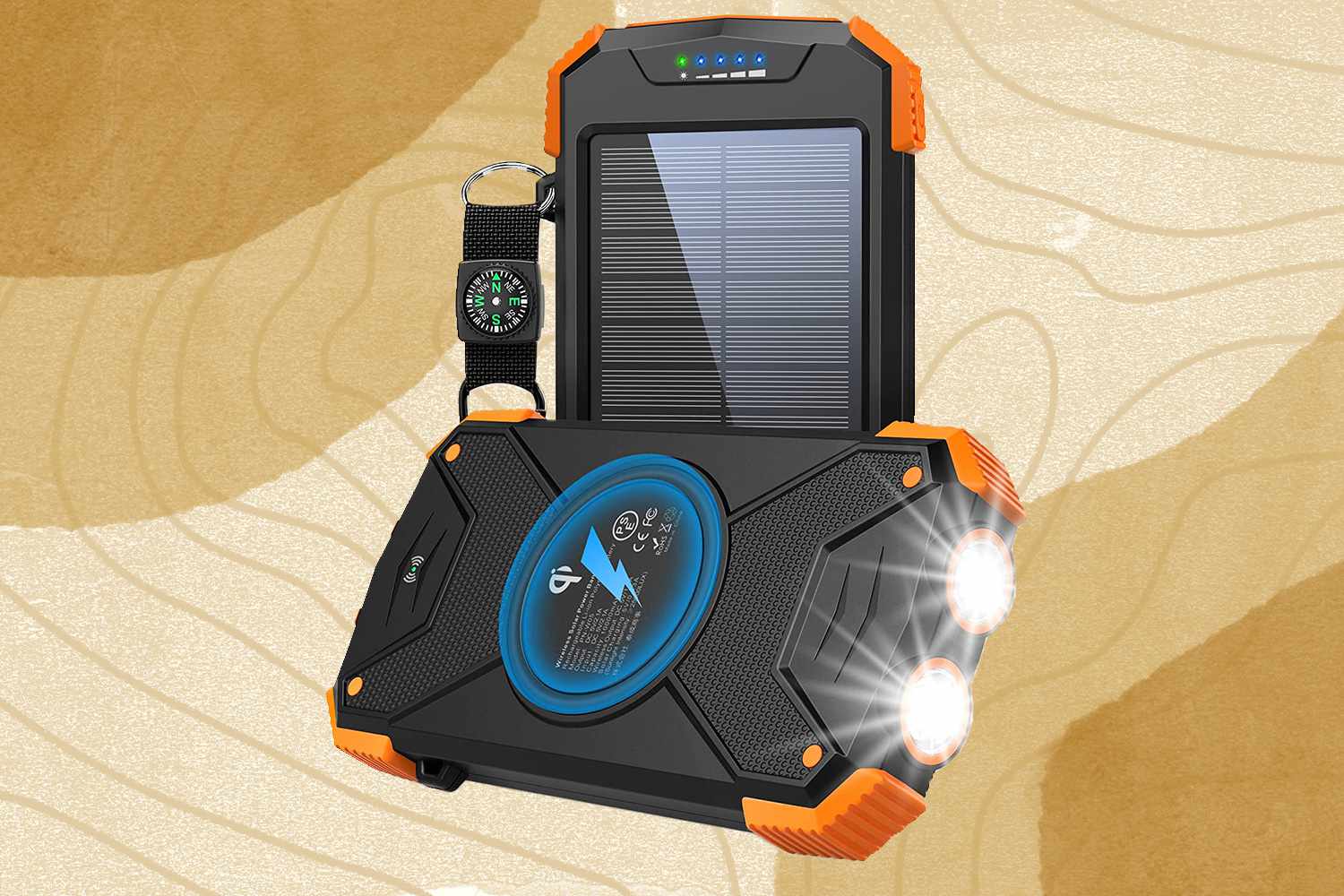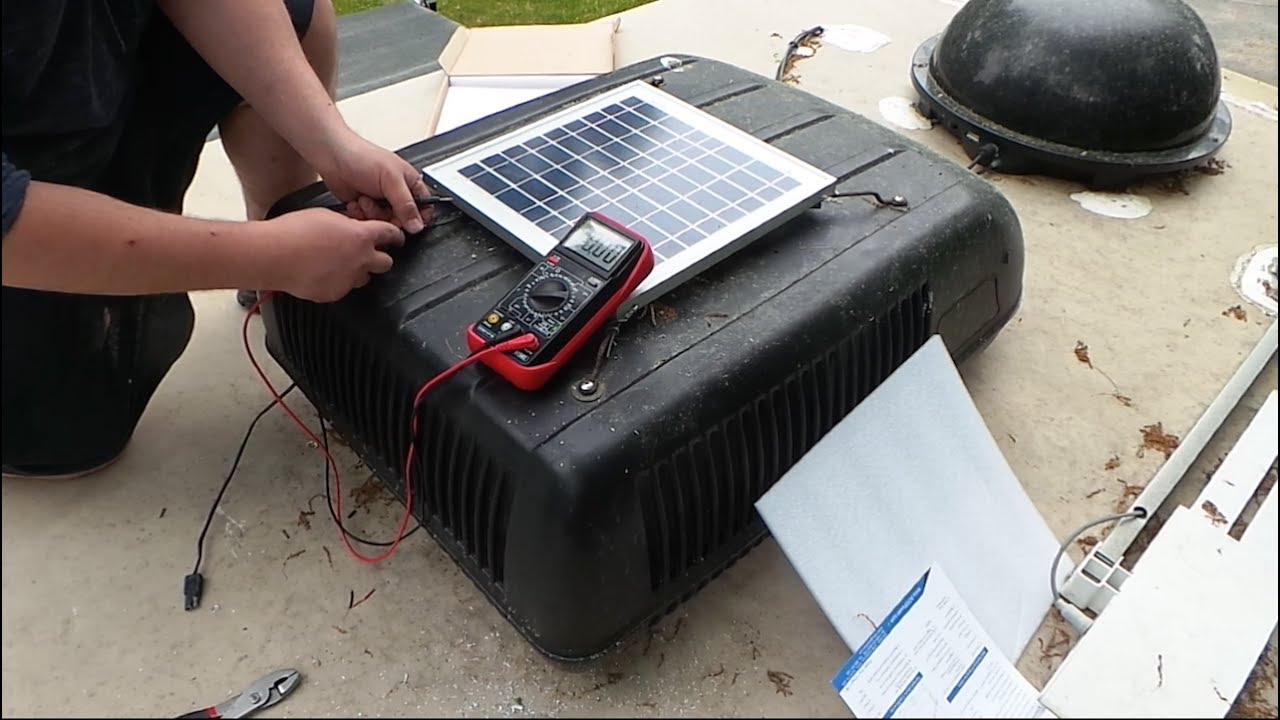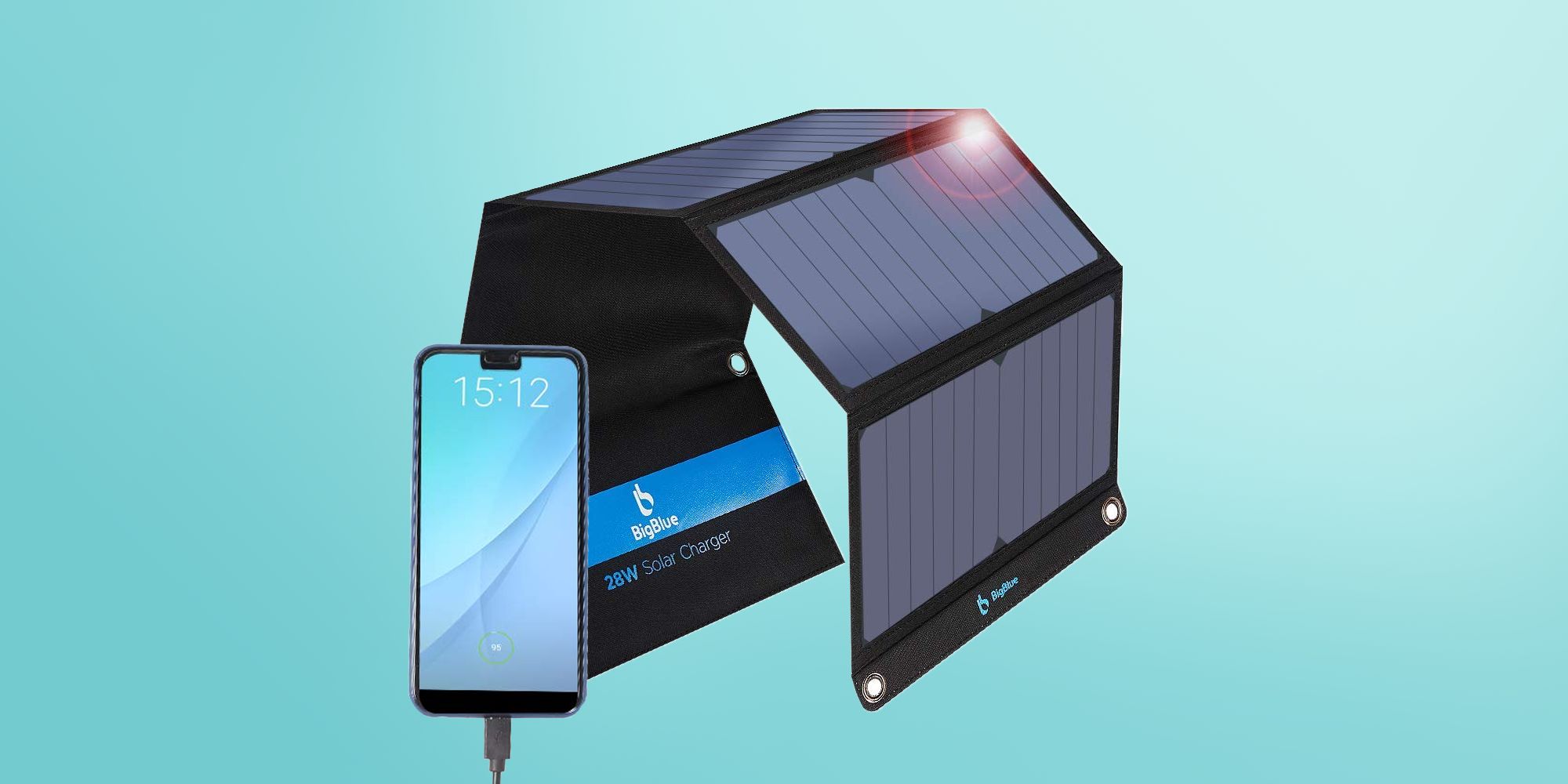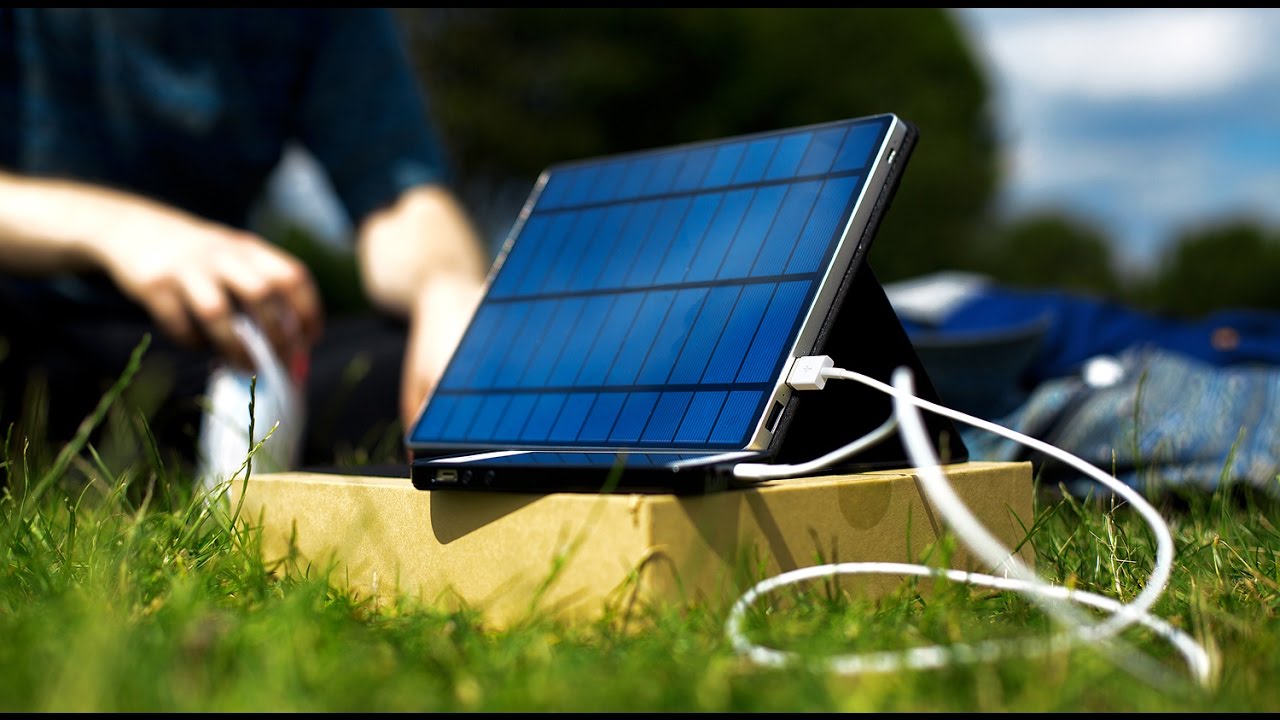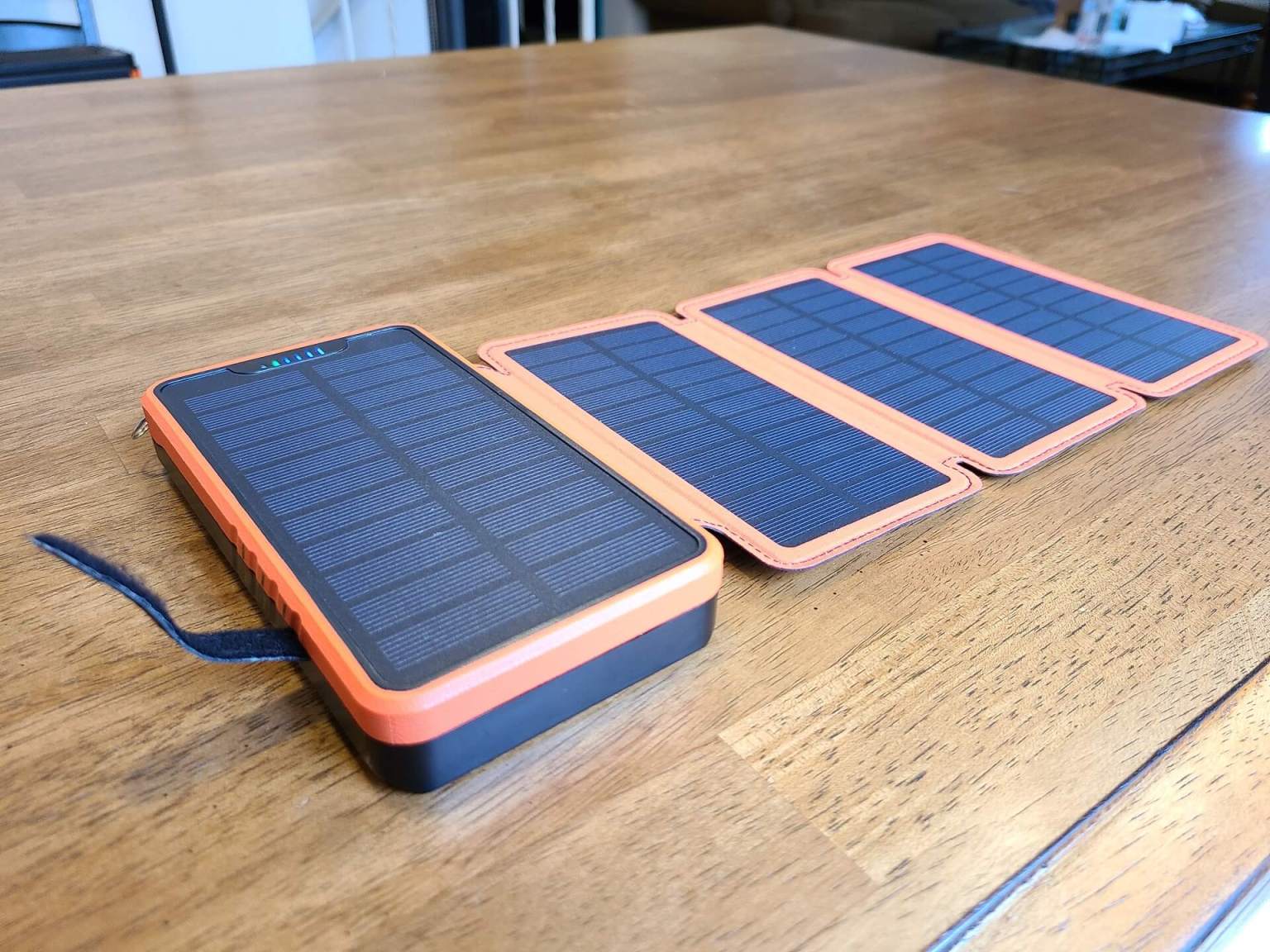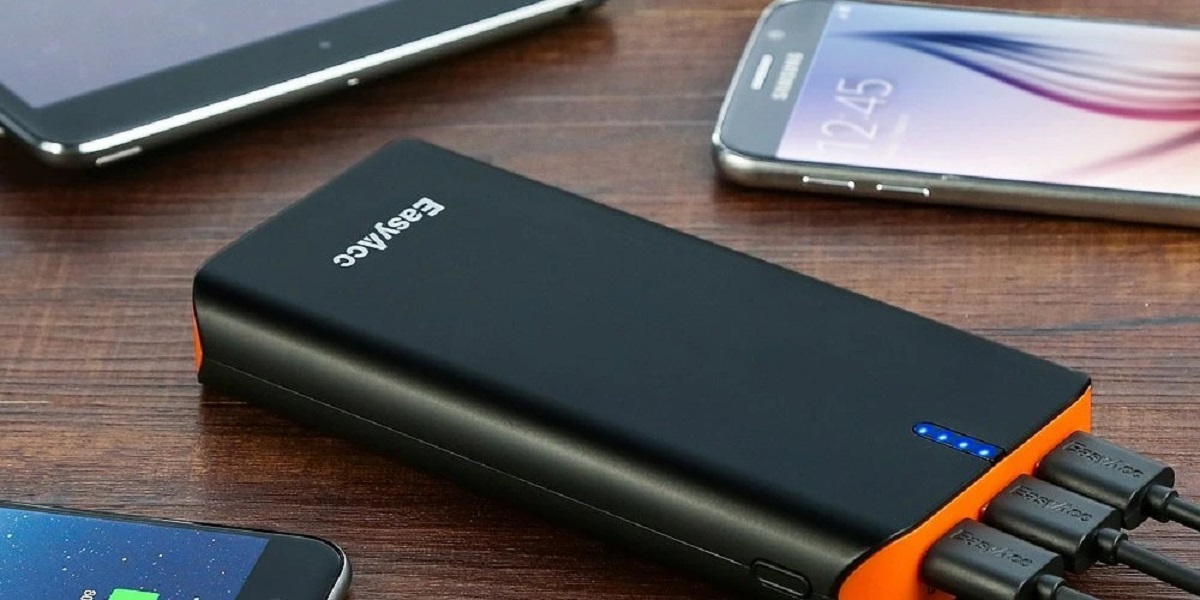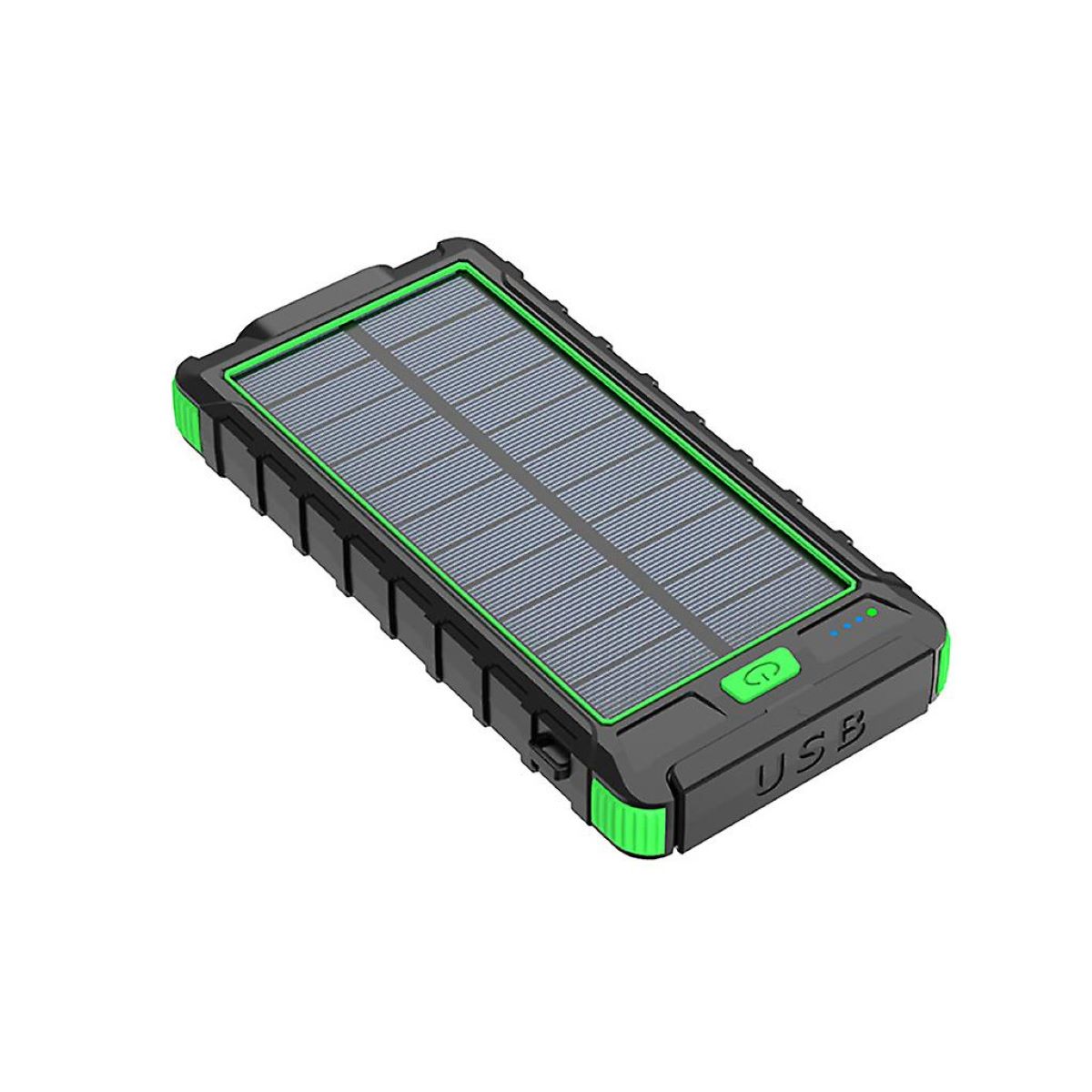Introduction
Welcome to the world of solar power banks! In this tech-savvy era, where devices have become an integral part of our daily lives, the need for a reliable and portable power source has become more crucial than ever. Whether you are a frequent traveler, an outdoor enthusiast, or simply someone who wants to stay connected on the go, a solar power bank can be your ultimate solution.
A solar power bank is a portable electronic device that harnesses sunlight and converts it into electrical energy to charge your devices. It serves as a backup power source when you are away from conventional power outlets, allowing you to charge your smartphones, tablets, cameras, and other USB-powered devices anytime, anywhere.
With the advancement of solar technology, solar power banks have become increasingly efficient and compact, making them a convenient and eco-friendly alternative to traditional power banks. Not only do they provide a sustainable way to charge your devices, but they also offer various benefits and features that make them an essential gadget for modern-day living.
Throughout this article, we will explore in-depth what a solar power bank is, how it works, the advantages of using one, and what to consider when purchasing a solar power bank. We will also provide insights into some of the top brands available in the market and offer tips on how to effectively charge and maintain your solar power bank to maximize its performance.
If you are ready to tap into the power of the sun and revolutionize the way you charge your devices, read on to discover the world of solar power banks and unlock the freedom of portable energy.
What is a Solar Power Bank?
A solar power bank is a portable electronic device that combines the technology of a power bank and a solar panel to provide a convenient and renewable energy source for charging your devices. It is designed to harness the power of sunlight and convert it into electrical energy, which can then be used to charge smartphones, tablets, cameras, and other USB-powered devices.
At its core, a solar power bank consists of three main components: a solar panel, a battery, and a charging circuit. The solar panel, usually located on the top or the back of the power bank, absorbs sunlight and converts it into electricity. The battery stores this electrical energy, acting as a reservoir of power. The charging circuit regulates the flow of electricity from the battery to your device, ensuring a safe and efficient charging process.
Solar power banks come in various sizes and capacities, ranging from compact models that can fit in your pocket to larger ones designed for outdoor adventures. The capacity of a solar power bank is measured in milliampere-hours (mAh) and indicates how much charge it can hold. The higher the capacity, the more power it can store, allowing you to charge your devices multiple times before needing to recharge the power bank.
One of the key features of a solar power bank is its ability to charge both through solar energy and conventional electricity. This means that you can charge the power bank by simply placing it under direct sunlight, allowing the solar panel to convert sunlight into electricity. Alternatively, you can also charge the power bank by connecting it to a power source using a USB cable. This dual-charging capability ensures that you have multiple options for keeping your power bank charged and ready to use.
Furthermore, many solar power banks are equipped with additional features such as LED indicators to display the battery level, built-in flashlights for emergency situations, and multiple USB ports to charge multiple devices simultaneously. These features make solar power banks versatile and suitable for various activities, such as camping, hiking, traveling, or even everyday use.
In summary, a solar power bank is a portable and eco-friendly device that utilizes solar energy to provide a reliable power source for charging your devices. Its dual-charging capability, compact design, and additional features make it an ideal companion for those who value convenience, sustainability, and the freedom to stay connected wherever they go.
How Does a Solar Power Bank Work?
A solar power bank works by harnessing the energy from sunlight and converting it into electrical energy that can be used to charge your devices. It utilizes the principles of photovoltaics to capture and convert sunlight into usable power.
The key component of a solar power bank is the solar panel, which is made up of multiple solar cells. These solar cells are typically composed of silicon, a semiconductor material that can generate an electric current when exposed to sunlight. When sunlight hits the solar panel, the photons in the sunlight excite the electrons in the silicon atoms, creating an electric field and generating a flow of electrons.
The solar panel is designed to maximize the absorption of sunlight by using special coatings or materials that minimize reflection and increase light absorption. The larger the surface area of the solar panel, the more sunlight it can capture, resulting in a higher energy conversion rate.
Once the solar panel has converted sunlight into electrical energy, it is then stored in the battery of the solar power bank. The battery acts as a reservoir, holding the generated electricity until it is needed to charge your devices. The capacity of the battery determines how much charge the solar power bank can store and deliver.
When you connect your device to the solar power bank, the charging circuit within the power bank regulates the flow of electricity from the battery to your device. This circuit ensures that the charging process is efficient and safe, preventing overcharging or damage to your device.
It is important to note that the charging speed of a solar power bank can vary depending on several factors. The intensity of sunlight, the angle at which the solar panel is positioned towards the sun, and the size and efficiency of the solar panel and battery can all affect the charging speed. In ideal conditions, a solar power bank can fully charge within a few hours of direct sunlight exposure.
In situations where sunlight is not available or insufficient, solar power banks can still be charged using conventional electricity. They usually come with a USB port for connecting to a power source, allowing you to recharge the power bank using a USB cable and an electrical outlet or another power bank.
Overall, a solar power bank works by converting sunlight into electrical energy through its solar panel, storing the energy in its battery, and delivering that power to your devices through its charging circuit. It provides a sustainable and reliable power source for charging your devices, making it an essential gadget for those on the go or in areas with limited access to electricity.
Benefits of Using a Solar Power Bank
Using a solar power bank offers numerous benefits that make it an essential device for anyone who wants to stay connected while on the go or in outdoor environments. Here are some of the key advantages of using a solar power bank:
- Portability: Solar power banks are designed to be compact and lightweight, making them highly portable. You can easily slip them into your bag or pocket and carry them wherever you go, ensuring that you have a reliable power source for your devices whenever you need it.
- Sustainable Energy Source: Solar power banks utilize renewable energy from the sun, making them an eco-friendly charging option. By harnessing solar power, you reduce your carbon footprint and contribute to the preservation of the environment.
- Independence from Electrical Outlets: Solar power banks free you from the dependence on conventional power outlets. Whether you are camping, hiking, or traveling to remote areas, you can rely on solar power to keep your devices charged, even when electricity is not readily available.
- Emergency Power Source: Solar power banks are particularly useful during emergencies or power outages. They provide a backup power source for your devices, allowing you to make emergency calls, access important information, or communicate with others when traditional power sources are unavailable.
- Versatility: Solar power banks offer versatility in charging various devices. They typically come with multiple USB ports, allowing you to charge multiple devices simultaneously. Whether it’s your smartphone, tablet, Bluetooth speakers, or even your action camera, a solar power bank can handle the charging needs of multiple devices.
- Long-Term Cost Savings: While the initial investment in a solar power bank may be higher compared to traditional power banks, the long-term savings make it worthwhile. By utilizing solar energy, you significantly reduce or eliminate the need to purchase disposable batteries or rely on costly electricity for charging your devices.
- Durable and Weather-Resistant: Many solar power banks are designed to withstand outdoor conditions. They are built with rugged and durable materials, often waterproof or shockproof, ensuring that they can withstand various weather conditions and outdoor adventures.
These benefits make a solar power bank a valuable investment for outdoor enthusiasts, travelers, and anyone who wants to stay connected in a sustainable and reliable way. With a solar power bank, you can enjoy the convenience of charging your devices anywhere, anytime, while reducing your environmental impact and promoting a greener lifestyle.
Factors to Consider When Buying a Solar Power Bank
When purchasing a solar power bank, it’s important to consider several factors to ensure that you choose the right one for your needs. Here are some key factors to consider:
- Capacity: The capacity of a solar power bank is measured in milliampere-hours (mAh) and indicates how much charge it can store. Consider your charging needs and the devices you plan to charge, and choose a power bank with a capacity that can adequately fulfill those needs. A higher capacity means more stored power and a longer runtime for your devices.
- Solar Panel Efficiency: The efficiency of the solar panel plays a role in how quickly the power bank can charge using solar energy. Look for a power bank with a high-efficiency solar panel that can convert sunlight into electricity effectively. Higher efficiency means faster charging times and better performance in low-light conditions.
- Charging Ports: Consider the number and type of charging ports the solar power bank offers. Make sure it has enough USB ports to accommodate your devices. Some power banks even come with additional features like wireless charging or USB-C ports for faster charging and compatibility with newer devices.
- Build Quality and Durability: Look for a solar power bank that is built with quality materials and has a sturdy construction. It should be able to withstand outdoor conditions and potential impacts. Waterproof and shockproof features are beneficial if you plan on using the power bank during outdoor activities.
- Size and Weight: Consider the size and weight of the solar power bank, especially if you plan on carrying it with you on a regular basis. A smaller and lighter power bank will be more convenient to carry around, but keep in mind that it may come with a trade-off in capacity and charging efficiency.
- Add-on Features: Some solar power banks come with additional features such as built-in flashlights, LED indicators, or even a compass. Consider whether these extra features are important to you and align with your intended use of the power bank.
- Reviews and Reputation: Before making a purchase, read customer reviews and assess the reputation of the brand or model you are considering. This will give you insights into the reliability, performance, and overall user satisfaction of the solar power bank.
- Price: Set a budget and find a solar power bank that offers a balance between the features you need and the price you are willing to pay. Remember that quality and reliability are important, so be cautious of extremely low-priced options that may compromise on performance and durability.
By considering these factors, you can make an informed decision and choose a solar power bank that aligns with your charging needs, durability requirements, and budget. Remember, the right solar power bank will provide you with a reliable and sustainable power source for your devices, ensuring you stay connected no matter where your adventures take you.
Top Solar Power Bank Brands in the Market
When it comes to solar power banks, several brands have established themselves as leaders in the market, offering reliable and high-quality products. Here are some of the top solar power bank brands to consider:
- Anker: Anker is known for its wide range of charging solutions, including solar power banks. Their solar power banks are highly regarded for their efficiency, build quality, and innovative features. Anker power banks often incorporate advanced technology to optimize charging speed and device compatibility.
- RAVPower: RAVPower is recognized for providing durable and reliable solar power banks that are built to withstand outdoor conditions. Their power banks are often equipped with multiple charging ports, high-capacity batteries, and sturdy designs, making them ideal for outdoor enthusiasts and adventurers.
- Goal Zero: Goal Zero specializes in portable solar power solutions, including power banks. They offer a range of high-performance power banks with advanced solar panels, durable construction, and ample capacity. Goal Zero power banks are often favored by outdoor enthusiasts, travelers, and emergency preparedness enthusiasts.
- Blavor: Blavor is known for its innovative and multifunctional solar power banks. Their products often combine solar charging capabilities with additional features such as wireless charging, built-in flashlights, and even FM radios. Blavor power banks are praised for their versatility and reliable performance.
- X-DRAGON: X-DRAGON is renowned for its sleek and compact solar power banks. Their products offer high-efficiency solar panels, durable build quality, and a range of charging options. X-DRAGON power banks are favored by those looking for a balance between portability and capacity.
- Hiluckey: Hiluckey is known for its rugged and outdoor-friendly solar power banks. Their power banks are designed to withstand water, dust, and shocks, making them suitable for various outdoor activities. Hiluckey power banks often feature high-capacity batteries and efficient solar panels.
- BigBlue: BigBlue specializes in solar chargers and power banks that are designed for the eco-conscious traveler. Their solar power banks are known for their high-conversion efficiency, lightweight design, and durable construction. BigBlue power banks often come with multiple USB ports and robust solar panels.
These brands have built a solid reputation for producing reliable, durable, and efficient solar power banks. However, it is important to research and read reviews specific to the model you are considering, as the performance and features can vary within each brand’s product lineup.
By choosing a solar power bank from one of these reputable brands, you can have confidence that you are investing in a quality product that will meet your charging needs and provide reliable power whenever you need it.
Charging Devices with a Solar Power Bank
Charging devices with a solar power bank is a simple and straightforward process. Here’s a step-by-step guide on how to effectively charge your devices using a solar power bank:
- Ensure Sufficient Sunlight: Place the solar power bank under direct sunlight. For optimal charging performance, make sure the solar panel is exposed to the maximum amount of sunlight possible. Avoid shading the solar panel with objects or placing it in areas with limited sunlight.
- Connect the Device: Use a charging cable to connect your device to the USB port on the solar power bank. Ensure that the cable is compatible with your device’s charging port. Many solar power banks come with multiple USB ports, allowing you to charge more than one device simultaneously.
- Monitor Charging Progress: Most solar power banks have LED indicators or a digital display to show the current battery level or charging status. Monitor these indicators to keep track of the charging progress and the remaining power in the power bank.
- Charge Times: The charging time will vary depending on the capacity of the solar power bank, the sunlight intensity, and the charging needs of your devices. In optimal conditions, a solar power bank can take a few hours to fully charge smaller devices like smartphones, while larger devices with higher battery capacities may require more time.
- Use Charging Cables Efficiently: To maximize efficiency, use the shortest charging cable possible between the solar power bank and your device. Longer cables can result in power loss and slower charging times. Additionally, avoid using devices while they are charging to optimize the charging process.
- Alternate Charging Methods: In situations where sunlight is not available or insufficient, you can still charge the solar power bank using conventional electricity. Connect the power bank to a power source using a USB cable and an electrical outlet, a computer, or another power bank.
- Recharge the Solar Power Bank: After using the solar power bank to charge your devices, it’s essential to recharge the power bank for future use. Place the power bank under direct sunlight or connect it to a power source using a USB cable. This ensures that the power bank remains fully charged and ready for whenever you need it.
- Properly Disconnect Devices: When you have finished charging your devices, ensure that you disconnect them properly. Unplug the charging cable from both the device and the solar power bank to avoid any potential damage or power drain.
By following these steps, you can efficiently charge your devices using a solar power bank. Remember, the charging speed may vary depending on factors such as sunlight intensity, solar power bank capacity, and the device you are charging. Patience and proper positioning of the solar power bank in direct sunlight will ensure the best charging experience.
How to Maintain a Solar Power Bank
Maintaining a solar power bank is crucial to ensure its longevity and optimal performance. By following these maintenance tips, you can keep your solar power bank in excellent condition:
- Keep it Clean: Regularly clean the solar panel of your power bank using a soft cloth or tissue. Remove any dirt, dust, or debris that may accumulate on the surface, as they can interfere with the solar panel’s efficiency.
- Avoid Overexposure to Extreme Temperatures: Avoid leaving your solar power bank in extremely hot or cold environments for prolonged periods, as this can affect its performance and battery life. Extreme temperatures can damage the internal components or even cause battery leakage. Store it in a cool, dry place when not in use.
- Protect it from Water and Moisture: While many solar power banks are designed to be water-resistant, it is still important to protect them from excessive moisture. Avoid exposing your power bank to heavy rain or submerging it in water. If it does get wet, dry it thoroughly before using or storing it.
- Avoid Overcharging and Over-Discharging: Overcharging or over-discharging your solar power bank can reduce its overall lifespan and performance. Avoid leaving the power bank connected to a charging source for an extended period once it is fully charged. Similarly, avoid draining the power bank’s battery completely before recharging it.
- Store with Sufficient Charge: If you plan to store your solar power bank for an extended period, make sure to do so with a sufficient charge. Leaving it completely discharged for a long time can lead to battery damage or loss of capacity. It is generally recommended to store it with at least 50% charge.
- Protect the Ports: Take care when inserting and removing charging cables from the USB ports to prevent damage. Avoid using excessive force or inserting cables at an angle. Additionally, when not in use, cover the ports with dust caps to prevent dust or debris from entering and causing potential damage.
- Check for Firmware Updates: Some solar power banks may have firmware updates available to improve performance or add new features. Check the manufacturer’s website or product manual for any available updates and follow the instructions to keep your power bank up to date.
- Refer to the User Manual: Each solar power bank may have specific maintenance instructions provided by the manufacturer. It is important to read and follow these instructions to ensure proper care for your specific model.
By following these maintenance tips, you can prolong the lifespan of your solar power bank and maximize its performance. Remember to handle your power bank with care, protect it from extreme conditions, and keep it clean and charged for efficient and reliable use whenever you need it.
Conclusion
Solar power banks are truly revolutionary gadgets that provide a sustainable and portable power source for charging your devices. Harnessing the energy from the sun, these devices offer the freedom to stay connected and powered up no matter where you are. With their compact design, eco-friendly nature, and various features, solar power banks have become a must-have companion for outdoor adventurers, travelers, and environmentally conscious individuals.
Throughout this article, we have explored what solar power banks are, how they work, the benefits of using them, factors to consider when purchasing one, and some of the top brands available in the market. We have also discussed the step-by-step process of charging devices with a solar power bank and highlighted key maintenance tips to ensure the longevity and optimal performance of these devices.
Solar power banks offer portability, sustainability, and independence from traditional power outlets. They provide a reliable power source during emergencies or when you are in areas with limited access to electricity. They also save you money in the long run and reduce your environmental impact by utilizing the renewable and abundant energy of the sun.
When buying a solar power bank, consider factors such as capacity, solar panel efficiency, charging ports, build quality, and price. Moreover, choose from reputable brands like Anker, RAVPower, Goal Zero, Blavor, X-DRAGON, Hiluckey, and BigBlue, which have established a strong presence in the market for their reliable and high-performance products.
By effectively charging your devices with a solar power bank and following the recommended maintenance tips, you can enjoy a seamless and eco-friendly charging experience while extending the lifespan of your device.
So, whether you are embarking on an outdoor adventure, going on a long journey, or simply want to stay connected sustainably, a solar power bank is the perfect companion to keep your devices charged and your adventures powered. Embrace the world of solar energy and enjoy the freedom of portable power with a solar power bank.







